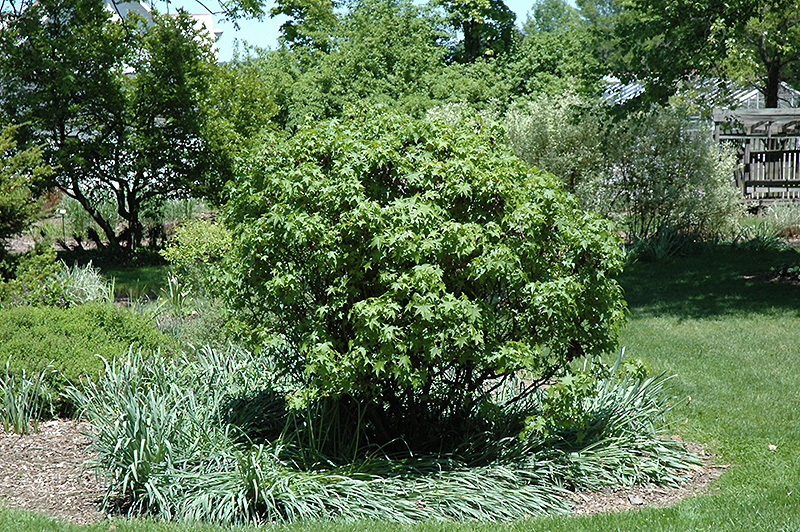Plant Finder
Oconee Sweet Gum*
Liquidambar styraciflua 'Oconee'
* This is a "special order" plant - contact store for details
Height: 15 feet
Spread: 12 feet
Sunlight:
![]()
Hardiness Zone: 5a
Other Names: American Sweet Gum
Description:
A dwarf shrubby version of the species with interestingly shaped leaves that turn deep reddish-purple in fall; somewhat particular about growing conditions; fruit is spiny and can be somewhat messy; an ideal size for garden use or the smaller landscape
Ornamental Features
Oconee Sweet Gum has forest green deciduous foliage on a plant with an upright spreading habit of growth. The lobed palmate leaves turn an outstanding purple in the fall. However, the fruit can be messy in the landscape and may require occasional clean-up.
Landscape Attributes
Oconee Sweet Gum is a dense multi-stemmed deciduous shrub with an upright spreading habit of growth. Its average texture blends into the landscape, but can be balanced by one or two finer or coarser trees or shrubs for an effective composition.
This is a high maintenance shrub that will require regular care and upkeep, and is best pruned in late winter once the threat of extreme cold has passed. Deer don't particularly care for this plant and will usually leave it alone in favor of tastier treats. Gardeners should be aware of the following characteristic(s) that may warrant special consideration;
- Messy
Oconee Sweet Gum is recommended for the following landscape applications;
- Accent
- Hedges/Screening
- General Garden Use
Planting & Growing
Oconee Sweet Gum will grow to be about 15 feet tall at maturity, with a spread of 12 feet. It has a low canopy with a typical clearance of 1 foot from the ground, and is suitable for planting under power lines. It grows at a fast rate, and under ideal conditions can be expected to live for 50 years or more.
This shrub should only be grown in full sunlight. It prefers to grow in average to moist conditions, and shouldn't be allowed to dry out. It is very fussy about its soil conditions and must have rich, acidic soils to ensure success, and is subject to chlorosis (yellowing) of the foliage in alkaline soils. It is somewhat tolerant of urban pollution. This is a selection of a native North American species.
* This is a "special order" plant - contact store for details
